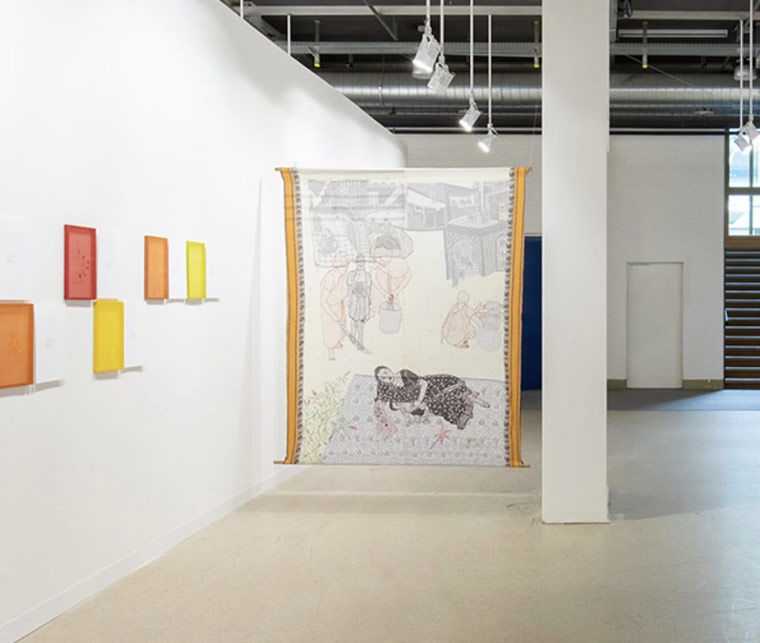In the year 1970, three gallery owners, Trudl Bruckner, Balz Hilt and Ernst Beyeler created the platform Art Basel in Basel, Switzerland. Little did they know that it would grow to become one of the leading global contemporary art fairs. Since its inception, Art Basel has invited artists, sellers, collectors, gallerists, enthusiasts to view and purchase contemporary art from across the world under one roof.
This year's fair, which included exhibitors from forty different countries, concluded with over 90,000 thousand visitors, surpassing last year's total of 82,000. However, at a time when there are so many fairs (like literature festivals) taking place across the globe, how important is representation at Art Basel?
I would definitely think it is vital given several leading collectors may skip smaller, newer fairs but would make the trip to Basel for Art Basel. There are also many young collectors making the effort of travelling to Basel, to see and then pick and choose works which they connect with. Thankfully, this year there was Indian representation with two of India’s leading galleries exhibiting at Basel. Interestingly, the majority of the Indian artists being featured are women.
What I did find interesting were two women artists who have integrated a lot of craft-based techniques within their works. Reena Kallat’s artwork titled, ‘Terra Firma: Chronicle of flawed Calculations’, uses electric wires and metal on a canvas. The wires and metal are neatly distributed through the series of eight works. Each piece of the work makes us introspect on the geographic borders we create, the boundaries and lines that govern and divide us as human beings. The map Kallat creates is unlike the common geography textbook map most of us may have studied and even today refer to. Differing in scale and design, the work pushes us to think about how we perceive places and people.
 ‘Terra Firma: Chronicle of flawed Calculations’ by Reena Kallat | Chemould Prescott Road
‘Terra Firma: Chronicle of flawed Calculations’ by Reena Kallat | Chemould Prescott Road
The viewer is forced to see the world from a different lens. With ongoing wars and geopolitical turmoil in many places, this piece of art is befitting the times we live in.
A mere reflection of what hinders us as a society.
Similarly, Jayeeta Chatterjee uses craft and skill to bring life to her work. With the help of a traditional Bengali quilting technique called Nakshi Kantha, she lyrically weaves a story of women, their hardships and the mundane. Her piece at Basel, ‘When a child itself is a mother’, a beautiful work of art, which brings together block printing and quilting.
 ‘When a child itself is a mother’ by Jayeeta Chatterjee | Chemould Prescott Road
‘When a child itself is a mother’ by Jayeeta Chatterjee | Chemould Prescott Road
Jayeeta puts across a powerful message highlighting that despite the legalities, child marriages continue to take place in India. In narrating the story, she explores and highlights India’s rich craft heritage but also addresses one of the most important social issues.
There is beauty in the way traditional craft and contemporary art come together in both these works of art. I could not think of a better way to represent India, in a leading contemporary fair.
However, while it is exciting to see Indian artists create their mark at Basel, there is still plenty of scope for more artists to display their works. In a country as vast and culturally diverse as India, there is abundant talent, which beckons to be noticed.
Unfortunately, the number of Indian artists directly depends on the number of galleries taking on these artists. For galleries, exhibiting at Art Basel is no easy task. There is a rigorous process of vetting and approving which takes place. Following which, the gallery has to be able to afford a spot at Basel, which is not cheap either. Very few Indian galleries would be willing to put in that level of investment every year and partake at the fair.
There would have to be an increase in value of contemporary Indian artists to begin with.
Perhaps that would encourage gallerists to partake with the hope of better returns? Or could fairs such as Basel allow individual artists a way in.


